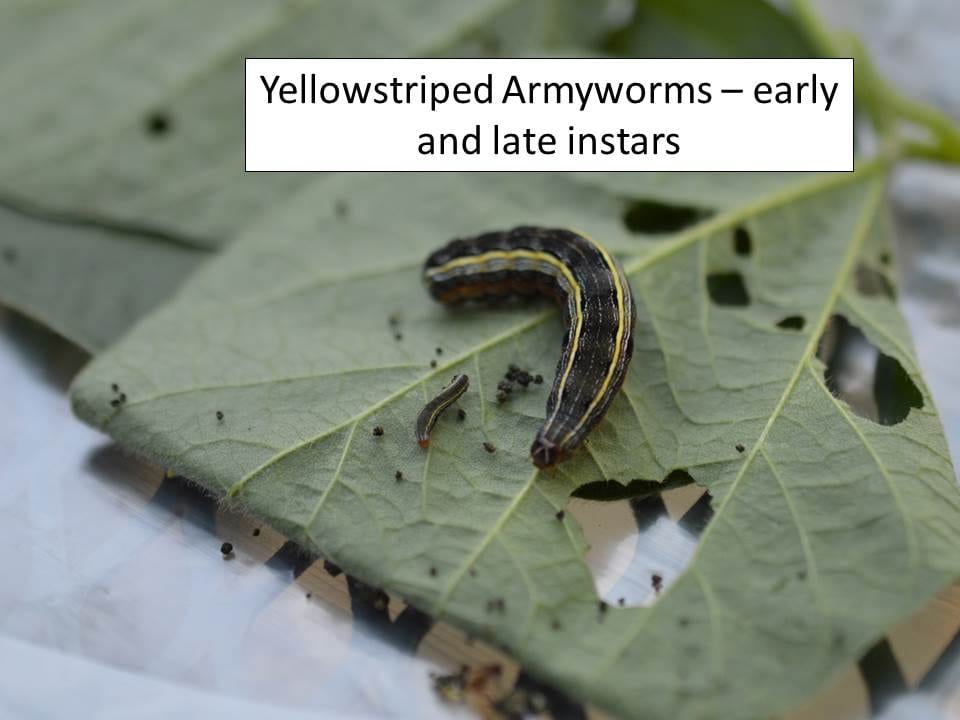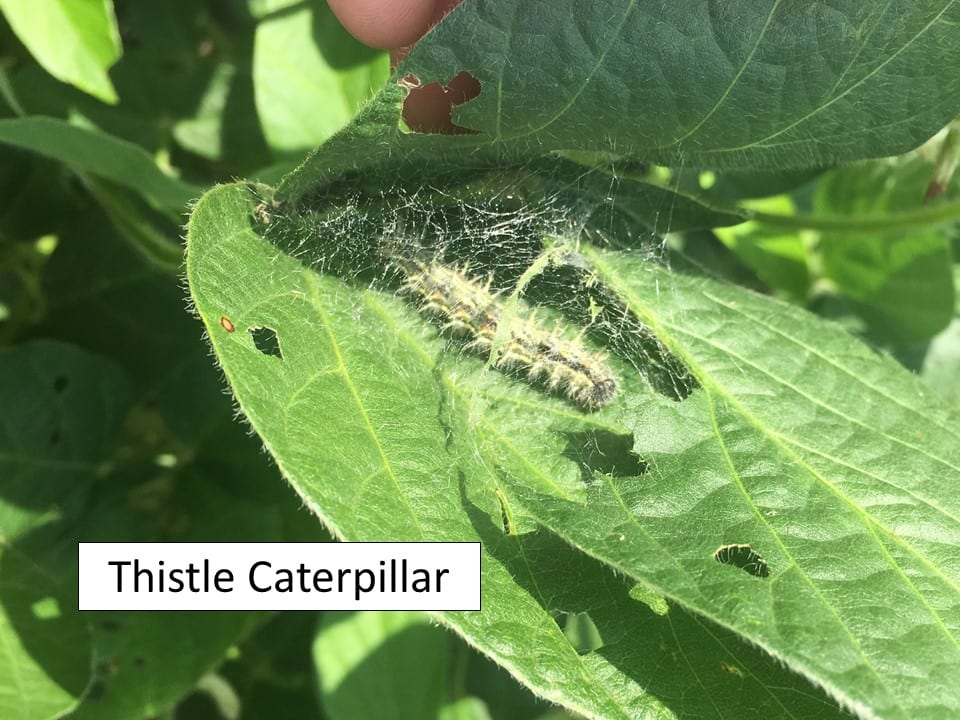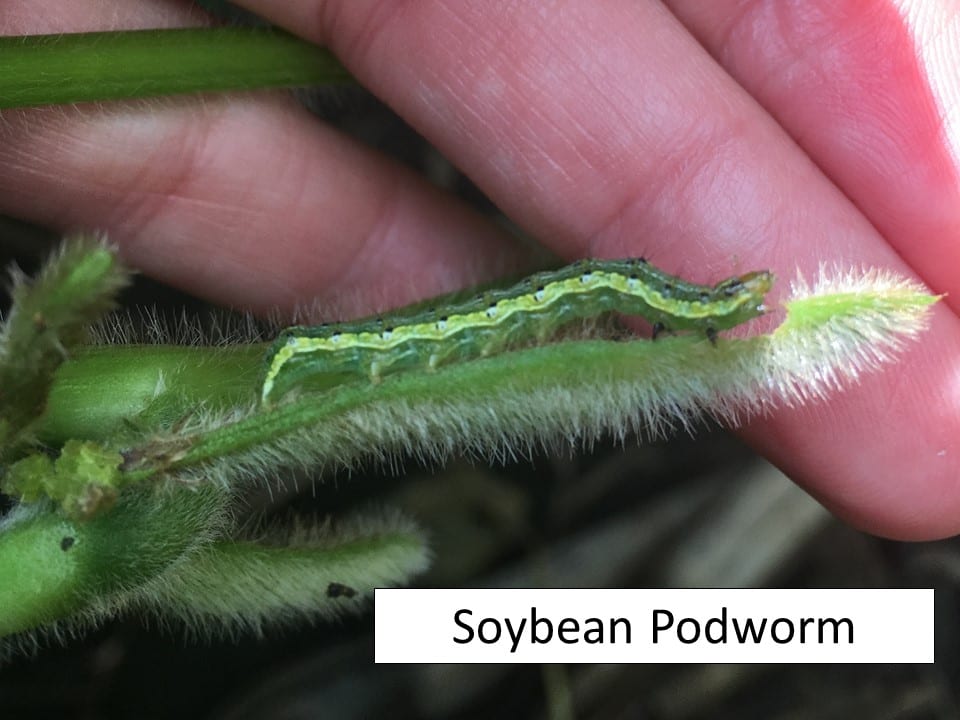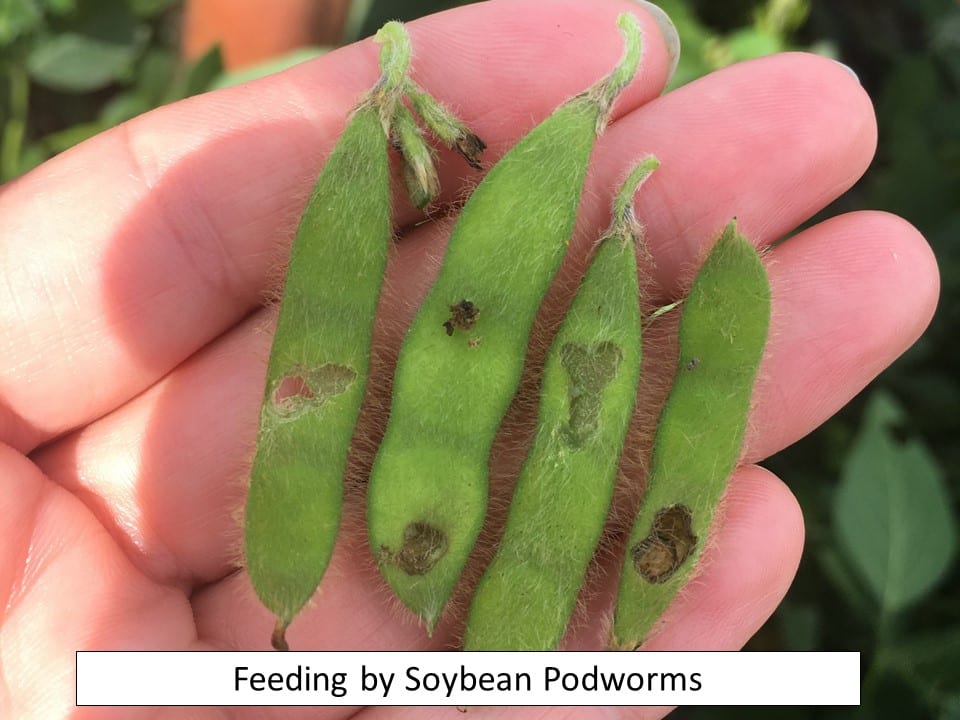–by Dr. Jeff Whitworth and Dr. Holly Schwarting
Soybeans seem to be attracting the attention of many different types of pests, including many defoliators. Currently, they are mainly green cloverworms, yellowstriped armyworms, and thistle caterpillars. Fortunately, populations of these species, or any others for that matter, have not reached densities that have warranted insecticide applications, for the most part.
Unfortunately, soybean podworm (a.k.a. corn earworm/sorghum headworm/cotton bollworm) populations are on the increase in south central and north central Kansas. These worms eat right through the pod to get at, and consume, the seeds within. So, as the seeds are filling, they are susceptible to being fed upon by these podworm larvae. They will feed on smaller, more succulent beans for 10-14 days, then cease feeding to pupate. Since they are feeding directly on the marketable product, it doesn’t take much of this feeding to reduce yield.
One important point to remember relative to treating for soybean podworms: these are contact insecticides and thus they must physically contact the targeted pest. Therefore, you need to utilize enough carrier (water) to penetrate throughout the soybean canopy to get to where these larvae are feeding. But, you need to do this while the larvae are still small and before they have negatively impacted the yield. There will probably be at least one more generation this year, so monitoring needs to continue as long as plants are adding pods and there is succulent green reproductive tissue to feed on. For treatment thresholds and insecticide information, please refer to the 2018 Soybean Insect Management Guide available at: https://www.bookstore.ksre.ksu.edu/pubs/mf743.pdf




